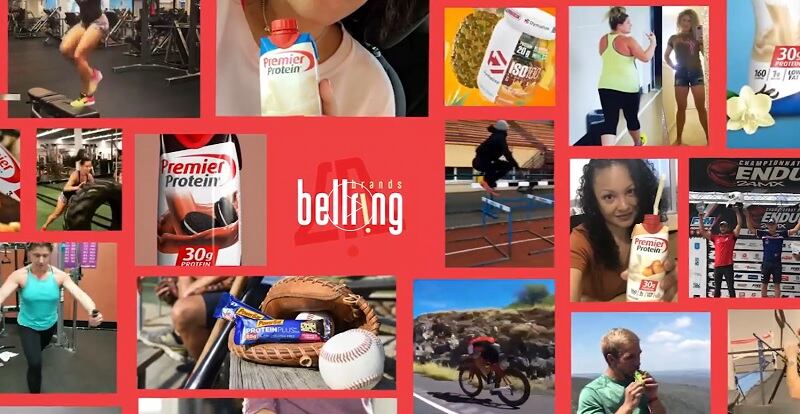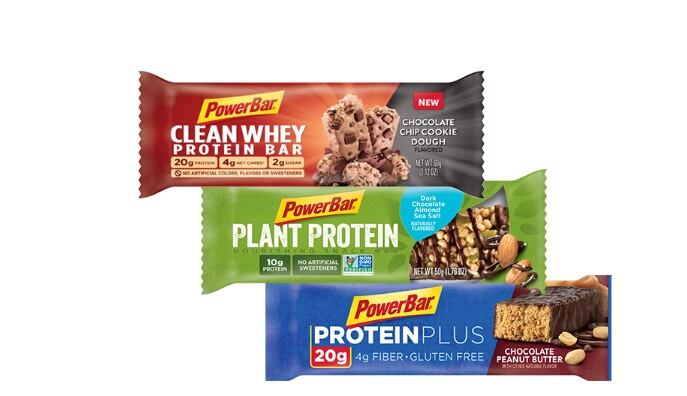BellRing Brands, which includes the iconic brands PowerBar, Premier Protein, Joint Juice and Dymatize, has had a rough start since spinning off from Post Holdings last October thanks to stay-at-home orders related to the coronavirus pandemic pulling the rug out from its on-the-go business.
The new company reported Aug. 7 that net sales during its third quarter fell 14.1% to $204m, dragging down its EBITDA by 37.8% to $38.5m. The drop was led by a 44% decline in PowerBar net sales, a 12% drop in Premier Protein net sales and a 10% decrease in RTD Shake net sales.
In response, the company lowered its net sales range for the fiscal year to $960m to $980m, but CEO Darcy Davenport said it still expects to deliver double digit net sales growth for the year and chief financial officer Paul Rode said he remained confident in its fiscal year 2020 adjusted EBITDA outlook of $192m to $202m.
The discrepancy between the outlook and the company’s current position prompted several pointed questions from investors on the company’s call.
A ‘judgement error,’ poor communication color conversation
The disconnect between the company’s third quarter results and its expectations for the full year were attributed in part to “a judgement error” on the speed with which the on-the-go market reduced by COVID-19 would rebound, and to a “little bit more deterioration in the international markets than we expected,” which together “put some pressure on our revenue assumptions for the balance of the year,” Post Holdings CEO Rob Vitale told analysts in a separate call with analysts ahead of BellRing’s quarterly call.
Davenport later explained that BellRing anticipated on-the-go consumption would improve steadily from a low in April and reach pre-COVID levels by June, but “instead, we saw more of a W shaped recovery, with May dipping back down and reaching pre-COVID levels until after the quarter ended in July.”
He added that this “coupled with a longer than expected international recovery” accounts for $50-60m from the company’s second half sales forecast, which, he said, will be equally split between Q3 and Q4.
The company’s Q3 results also came as a surprise to some analysts because the company failed to clearly communicate to analysts last quarter the impact of a substantial inventory load at the end of Q2 – a shortcoming owned by both Post and BellRing executives.
“It turns out that we were more opaque than we thought we were in trying to communicate that there was a substantial inventory load as we exited the second quarter, and that there was some promotional timing that would push back some volume into the fourth quarter,” which resulted in substantially lower sales in Q3, Vitale said. “We specifically did call out in our guidance that the second half plan was back loaded, but clearly not precisely enough.”
Strong consumption holds promise
Davenport provided further context designed to soften the sales drop by noting that even though sales were down, consumption of BellRing Brands’ products remained strong.
“Despite strong COVID category headwinds, Premier Protein Shake consumption was strong this quarter – up 11% across both tracked and untracked channels. Untracked outpaced track channels growing 33% in the quarter, while tracked declined 4.5%,” he said, adding, “Ecommerce Premier Protein’s third largest channel led the way up an amazing 185%.”
In addition, he said, July consumption has remained strong at 12% in tracked and untracked channels.
Likewise, he said, Premier Protein increased two share points in the quarter to 18% of the RTD category, and the company’s promotional strategy remaints “effective, driving approximately 40% of our consumption growth.”
Finally, he noted that Premier Protein’s household penetration is up 6.6% year-to-date and repeat purchases at about 50%.
Skepticism remains
Despite company executives’ optimism, some analysts on the call remained skeptical and looked for more reassurance that incremental growth in the fourth quarter would be enough to meet RingBell’s targets.
Jason English of Goldman Sachs observed that RingBell’s Q3 performance caught some “a little bit flatfooted in terms of the magnitude of the decline, but your forecast for next quarter implies a pretty robust snapback … around 23% growth. … If that is generally right, what’s going to drive the incremental growth to get to that 23% type level in the fourth quarter?”
Davenport said he expects to see “pretty robust growth” in Premier Shakes driven by promotions planned in “almost every single major account, as well as the category rebound of being more of a tailwind than it has been.”
English pushed back on the idea of shifting winds, noting that when “I look around this world does not feel anything like a post-COVID world, yet, and … I’m not expecting to feel like a pre-COVID world for quite some time. Why should we expect your business to perform at pre-COVID type levels for anytime in the next six months, even though it may have hit that level in July. Why should we believe it will be durable?”
Davenport said that while he also agrees it does not feel like a post-COVID world, yet, “there are some unique things happening” that could help smooth out BellRing’s performance.
For example, he explained that while “the on-the-go usage occasion is still under-indexing [and] people are not out and about like they were before. … The in-home use is over-indexing, and what we’re seeing is some new trends around food as medicine or proactive health” that are benefiting the everyday nutrition side of the business independently of a post-COVID or COVID world.
Bill Chappell of Truist Securities questioned the extent of consumers’ current embrace of food-as-medicine, while allowing room for this trend in the future. He noted during the call that while BellRing’s numbers were declining, “sales of ketchup and frozen potatoes were tripling, and so clearly there are consumers that have gone to comfort food and are still on comfort food.”
As such, he asked if at some point everybody would try to shed those pounds and embrace products like those offered by BellRing or whether “there’s kind of a permanent pause on some of the active nutrition growth as people slowly come out of it.”
Davenport agreed that sports nutrition and on-the-go have been hit hard during the pandemic, but he said he was confident they would come back as people start returning to their health routines.
“The fundamentals of this category are strong. People are looking to improve their health. They want convenience. So, I have no doubt that this category will rebound,” he said.
In the meantime, Davenport said, BellRing would focus on helping people at home by shifting marketing to focus on using products and recipes at home and considering how to renovate or use packaging call-outs to leverage shifting consumer interests and longer-term trends.



